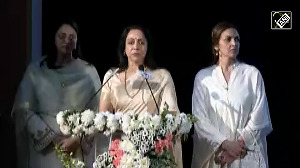India has been the scene of some of the most frenetic deal-making, big expansion announcements, and new car launches in the global auto industry. Consider that in the last 18 months alone General Motors, Fiat, Honda, Nissan, and Hyundai have announced Indian investments valued at roughly $1.5 billion.
Ask any auto executive, and he or she will tell you that outside of China, India is the most intriguing emerging market opportunity out there.
Recent visits by industry bigwigs such as Fiat Chairman Luca Cordero di Montezemolo, Renault-Nissan alliance Chief Executive Carlos Ghosn, and GM boss G. Richard Wagoner, Jr., who arrived in New Delhi on April 16 to help launch the company's Chevrolet Spark locally underscore the new focus on India's high-speed car market.
In early April, Ghosn was in India to inaugurate a plant in Nashik jointly run by Renault and Indian carmaker Mahindra & Mahindra that will produce an economy car called the Logan. The base model will cost $9,700, but Ghosn also hopes to launch an ultra-cheap model in India -- that will retail for about $3,000 -- later in the decade.
Production to Double
"In a way, the Indian car industry has arrived," says Jagdish Khattar, managing director of Maruti Udyog, the Indian subsidiary of Japan's Suzuki Motor. What once was a smallish auto market is starting to attract the kind of serious new investment that could help it emerge as a sizable one. Khattar notes that Maruti, Tata Motors, and Hyundai are starting to achieve serious manufacturing scale with each automaker now producing 200,000-plus units a year.
Right now, India's entire industry -- local producers and transplants -- collectively manufacture about 1.4 million vehicles a year. That's expected to double by 2008, and if it does, India will surpass Britain and Canada in total car production. However, it still will be light years behind China, which is on track to hit 10 million or so in 2007.
And India's growth dynamics look robust. It is home to a young population, and has rising income levels, an underserved rural market, and an economy galloping along at 9%-plus growth rates.
The Ultra-Cheap Challenge
And while India may be the fabled "back-office of the world", Prime Minister Manmohan Singh's government has big aspirations to boost the country's manufacturing sector. Duties on small cars fell from 24% to 16% in 2006, though taxes remain somewhat high compared to China. The government hopes to see India auto sales jump from last year's $34 billion to $145 billion in 2016. If they do, the domestic auto industry could represent about 10% of India's gross domestic product.





